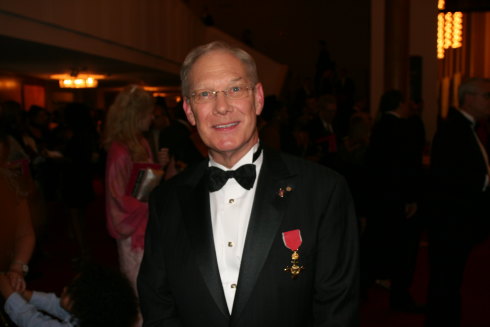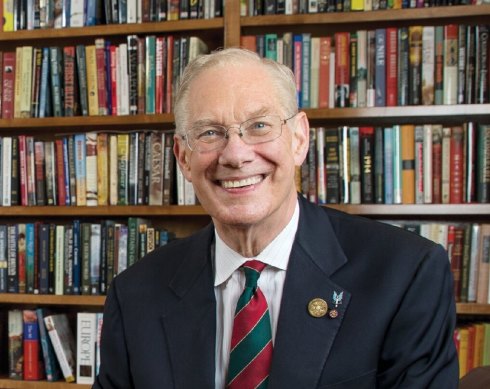
In 1998, Jordan, working with Steven R. Cummings, an expert on ageing at the University of California, San Francisco, showed that another estrogen-blocking drug, raloxifene, both improved bone density in postmenopausal women and reduced their risk of developing breast cancer by as much as 70 per cent.
Jordan was, in many ways, an old-school researcher. He insisted that a drug should be investigated for all its potential applications, not just the ones that might make money or be the quickest to market. He believed that scientists should be transparent about side effects, even if it meant reducing a drug’s appeal. He called his work “conversations with nature.”

V. Craig Jordan, the scientific director of the Lombardi Comprehensive Cancer Center at Georgetown University, 2012.Credit: Getty
Virgil Craig Jordan was born on July 25, 1947, in New Braunfels, Texas. His British mother, Cynthia Mottram, and his American father, Virgil Johnson, met while his father was serving in England during World War II and then returned home to Texas after the war.
They divorced soon after Craig was born, and he and his mother moved to her home in Bramhall, near Manchester, where he grew up. She later married Geoffrey Jordan, who adopted Craig as his son.
By his own account, Jordan was a mediocre student. The only subject in which he excelled was chemistry, a passion that his mother fostered by letting him build a laboratory in his bedroom.
“Experiments would often get out of hand, so a fuming brew would be hurled out of the window onto the lawn below, leaving the curtains ablaze,” he wrote in Endocrine Journal in 2014. “Naturally, the lawn died.”
Given his poor grades, he assumed that he would go straight from high school to the workforce, perhaps as a lab technician at a nearby plant run by Imperial Chemical Industries (which today is part of the pharmaceutical giant AstraZeneca).
But his mother leaned on his teachers to give him another year of study to prepare for college, and he managed to win a scholarship to the University of Leeds. He earned a bachelor’s degree in 1969, a doctorate in 1973 and a doctorate of science in 1985, all in pharmacology.
He also joined the University Officers’ Training Corps, after which he served in the British Army and its reserves until mandatory retirement at 55, most of the time with the elite Special Air Service, a rough equivalent to the US Navy SEALs.

V Craig JordanCredit: New York Times
While at Leeds, he began working on tamoxifen, an interest that he took with him through a series of positions at several institutions: the Worcester Foundation for Experimental Biology in Shrewsbury, Massachusetts; the University of Wisconsin; Northwestern University outside Chicago; the Fox Chase Cancer Centre in Philadelphia; Georgetown University in Washington; and, starting in 2014, the MD Anderson Cancer Centre at the University of Texas in Houston.
Jordan’s three marriages ended in divorce. He is survived by two daughters from his first marriage, Alexandra Noel and Helen Turner, and five grandchildren.
He was diagnosed with Stage 4 renal cancer in 2018, an earth-shattering result that he nevertheless spoke openly about — and that he fought against and worked through for the last years of his life.
“I find myself in a state of flux, but I’m not scared of dying,” he told The ASCO Post, an oncology publication, in 2022. “I was the person most likely never to make age 30 with the stupid things I was doing in my youth.”



























